Late March and early April mark the beginning migratory flights of American Kestrels (Falco sparverius) returning to their North American breeding grounds. The hawk watchers at Tussey Mountain start to see kestrels as early as the last week in March. Some of the kestrels passing over Tussey Mountain could find themselves in Quebec or Ontario for their spring breeding periods.
Come spring, these birds make the long journey northward from their wintering grounds in distant Central America. Many kestrels that reside in Pennsylvania during the spring and summer will overwinter in southern states such as Florida. Other kestrels found in Pennsylvania are year-round residents. Some kestrels travel to Pennsylvania from locations north of the state to overwinter. The Kestrel’s North American range extends from the southern United States up through Canada and into Alaska. This wide range means that the birds can thrive in a variety of habitats, ranging from deserts to farmland to alpine meadows.
Within Pennsylvania, Kestrels are most common in open country including farmland, orchards, and grasslands. Kestrels feed upon grasshoppers, rodents such as mice, shrews and voles, and even small birds. Because of their diet of insects and rodents they are extremely efficient at controlling pest populations around farms.
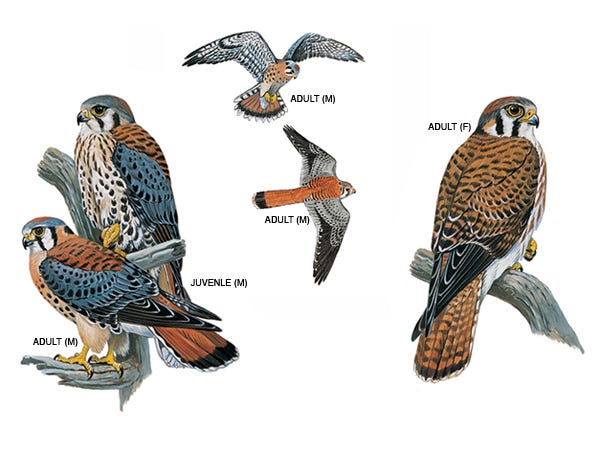
As North America’s smallest falcon, kestrels are similar in size to mourning doves. They’re often seen perched on telephone wires or tree branches along farm fields and meadows. Kestrels are a sexually dimorphic bird species, which means that males and females have different plumage colorations. Male kestrels can be identified by their patriotic (red, white, and blue) feather plumage, which includes bluish wings and head, a white underside and red-brown backs with black bars or spots. Their tail feathers have a single black bar at the tip.
Female kestrel’s plumage is less vibrant than the males, but still beautiful in its own right. Females have red-brown wings, backs with black bars and red-brown tails with many black bars. Females have brown speckled or streaked creamy white undersides, and will generally be larger in size than the males.
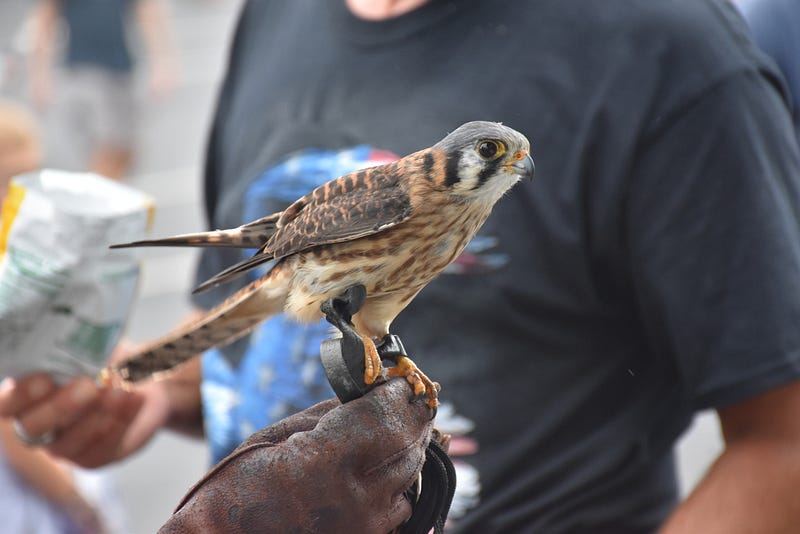
When kestrels return to their breeding grounds they begin looking for potential mates. Kestrels do not mate for life, but instead court a new mate each spring. Kestrels are primarily cavity nesters and can be found in old woodpecker cavities, natural tree holes, protected ledges, and nest boxes. Kestrel populations have been declining within Pennsylvania and the Northeastern United States. These population declines can be linked to changing farming practices, including increased pesticide usage as well as land clearing practices that eliminate natural nesting cavities. According to the North American Breeding Bird Survey, the kestrel, the continents most common and widespread falcon, experienced a 50% population decline between 1966 and 2015. With the loss of kestrel nesting habitat in Pennsylvania, one of the most important steps for kestrel conservation is providing nest boxes in suitable kestrel habitat across Pennsylvania and the Northeastern United States.
At Shavers Creek, I took on a project that included building five American Kestrel nest boxes: installing the boxes on suitable kestrel habitat in coordination with the USDA and local landowners. These five nest boxes will be monitored through one of Shavers Creek’s current citizen science endeavors, Project Nestwatch.
This project takes inspiration from Hawk Mountain Sanctuary’s Pennsylvania Farmland Raptor Project. The PA Farmland Raptor Project focuses on conservation education for landowners, maintaining grassland habitats, reporting sightings, and nest box installation across the state. The four main farmland raptors this project is focused on are: Northern harriers, Barn Owls, Short-eared owls and the American Kestrels. For more information on the PA Farmland Raptor Project and how you can get involved or build your own nest box, visit the Hawk Mountain Sanctuary PA Farmland Raptor Project.
Building and Installation
Providing nesting locations for this beautiful farmland raptor species can be a rewarding experience. You don’t have to be a master carpenter to build a kestrel nest box. On the PA Farmland Raptor Project web page Hawk Mountain Sanctuary has provided free downloadable plans or schematics for building Barn Owl and Kestrel boxes. These plans are easy to understand for all skill levels of woodworkers, even if you’re a novice. Here’s a link for the Kestrel Nest box plans.
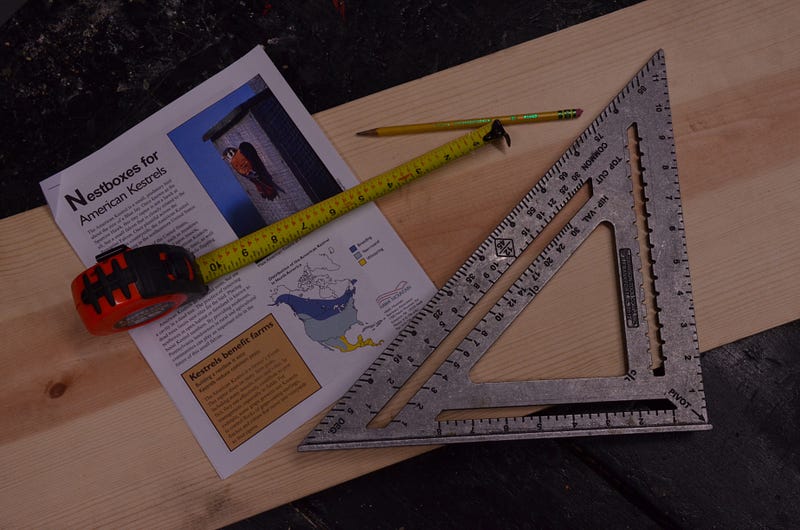
Before you even start to collect your materials and begin to build your box you want to determine an appropriate location for a box. Some important questions to keep in mind when choosing a nest box locale include:
· Does the habitat surrounding the potential nest box location have at least 1 acre of mixed grassy field habitat full of small rodents and insects?
· Does the location have excessive amounts of human activity in its vicinity? (While Kestrels are tolerant of small amounts of human activity, a location that has lots of vehicle noise or other distractions in close proximity might not be the best choice.)
· Is the box easily accessible for installation and maintenance?
· If the location you would like to install the box on is not your own property, do you have permission from the landowner to install the box?
· And last but not least, its important to consider are you willing to maintain and inspect the nest box on a yearly basis?
· It is also important to recognize that kestrel boxes should be placed in easily accessible elevated positions such as the sides of barns or a lone tree or pole in a field.
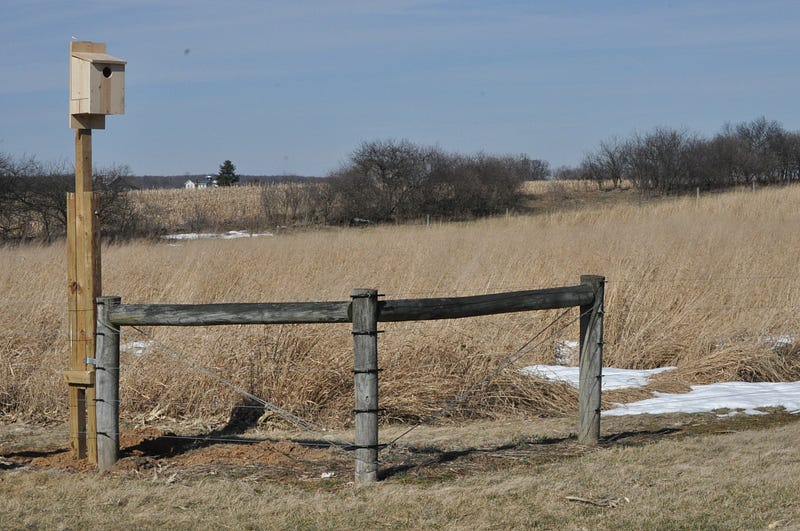
An elevator Kestrel nest box next to grassy fields.
Once you have sifted through those questions and the menagerie of other questions you might encounter you can determine how many boxes you would like to build and put together a cut list. Make a shopping list before you head to the home improvement store or the lumberyard to make gathering supplies and materials a breeze.
Once you have your cut list and all your required materials you can commence cutting. If you are building more than one box I would suggest cutting all the different parts (i.e. all the roofs, backboards, fronts) before beginning to construct the boxes.
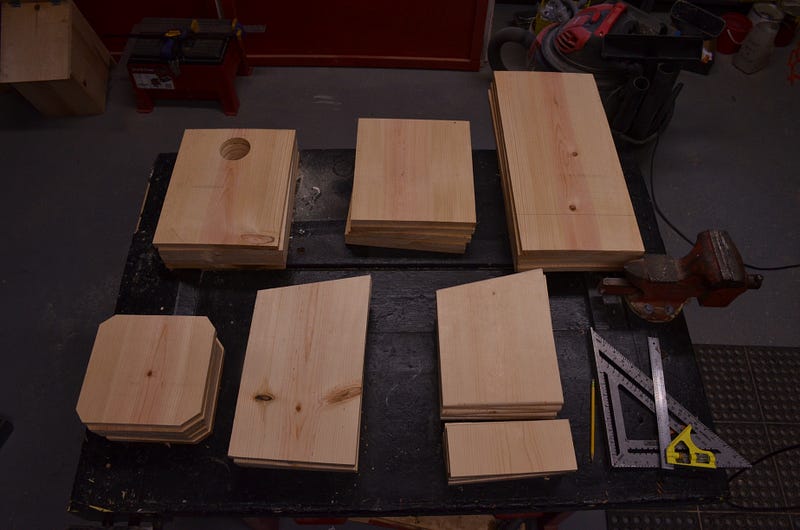
All the components for five kestrel nest boxes.
Tips and Tricks
Some additional tips for building and installing Kestrel boxes:
You can place the circular piece of wood you drilled out for the entrance to the box inside the box as a step to assist young kestrels in entering and exiting the box.
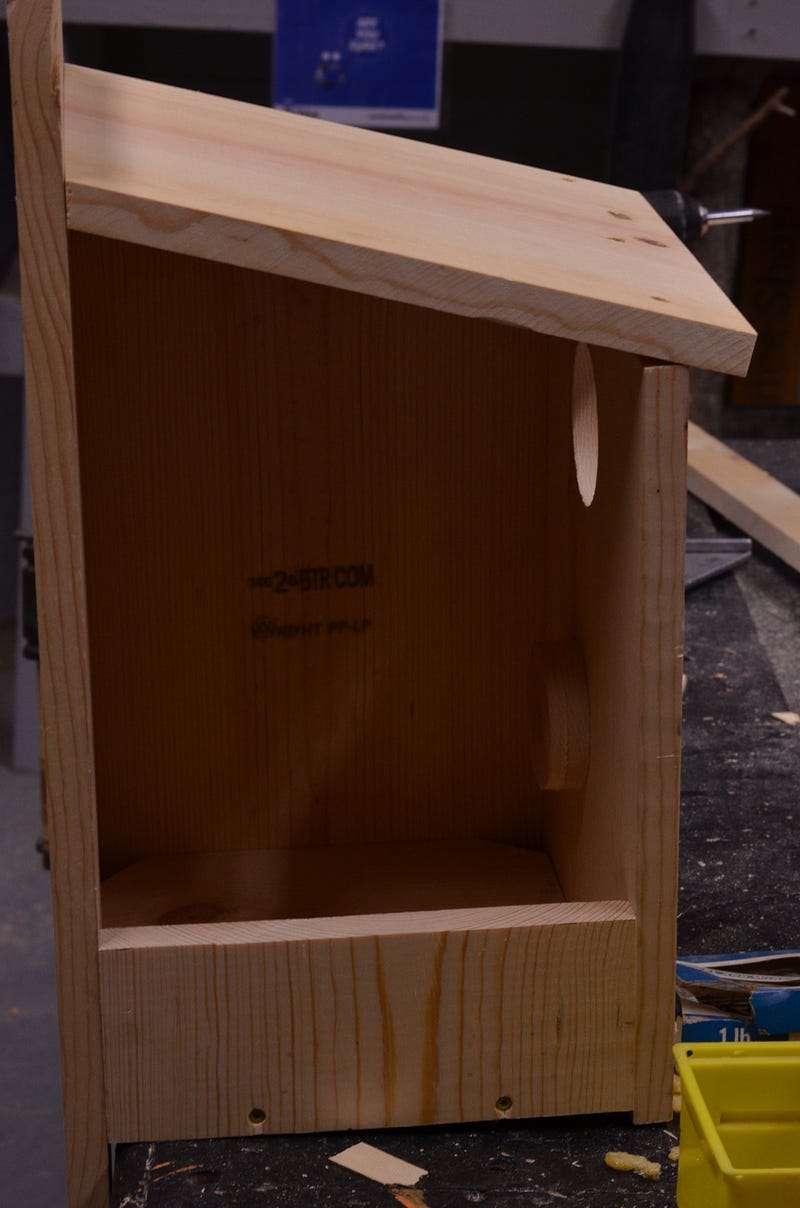
Place a small screw or nail on the door to act as a handle to assist in opening when checking/cleaning the nest box.
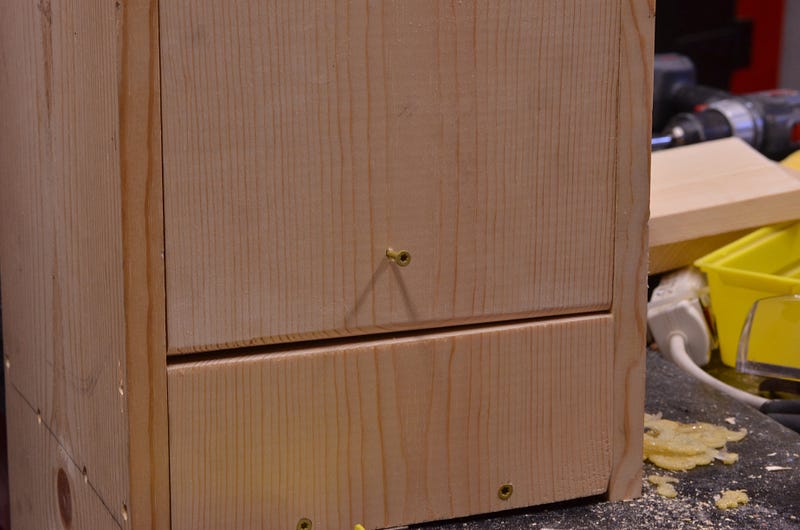
Drill your screws partially into the backboard before carrying the box up a ladder to install on a barn, tree or a pole.

If you don’t have access to a ladder you can build a little swinging post system to help in the initial installation of the nest box. Make sure to put some nesting material in the box before hoisting it into place.

Be sure to place a sturdy support into the swinging post system to prevent the box from tipping over.
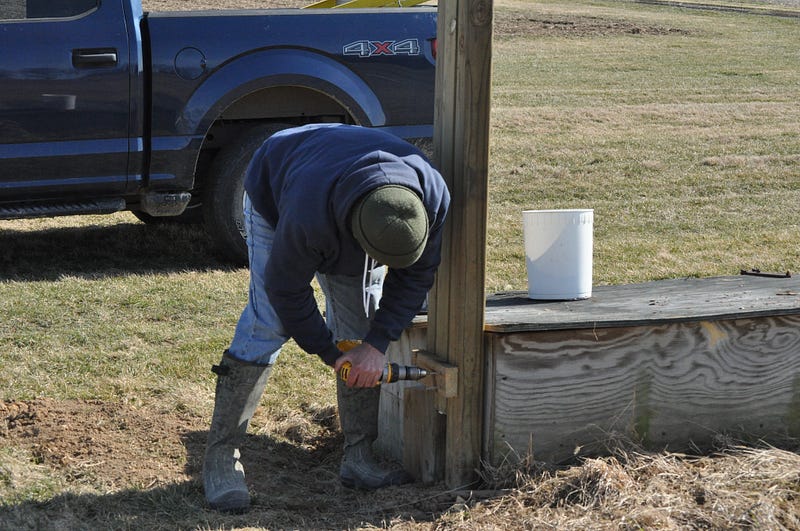
When placing a nest box on the side of a building make sure that the box is not facing a well-traveled road and is at a safe height for annual inspection and cleaning.
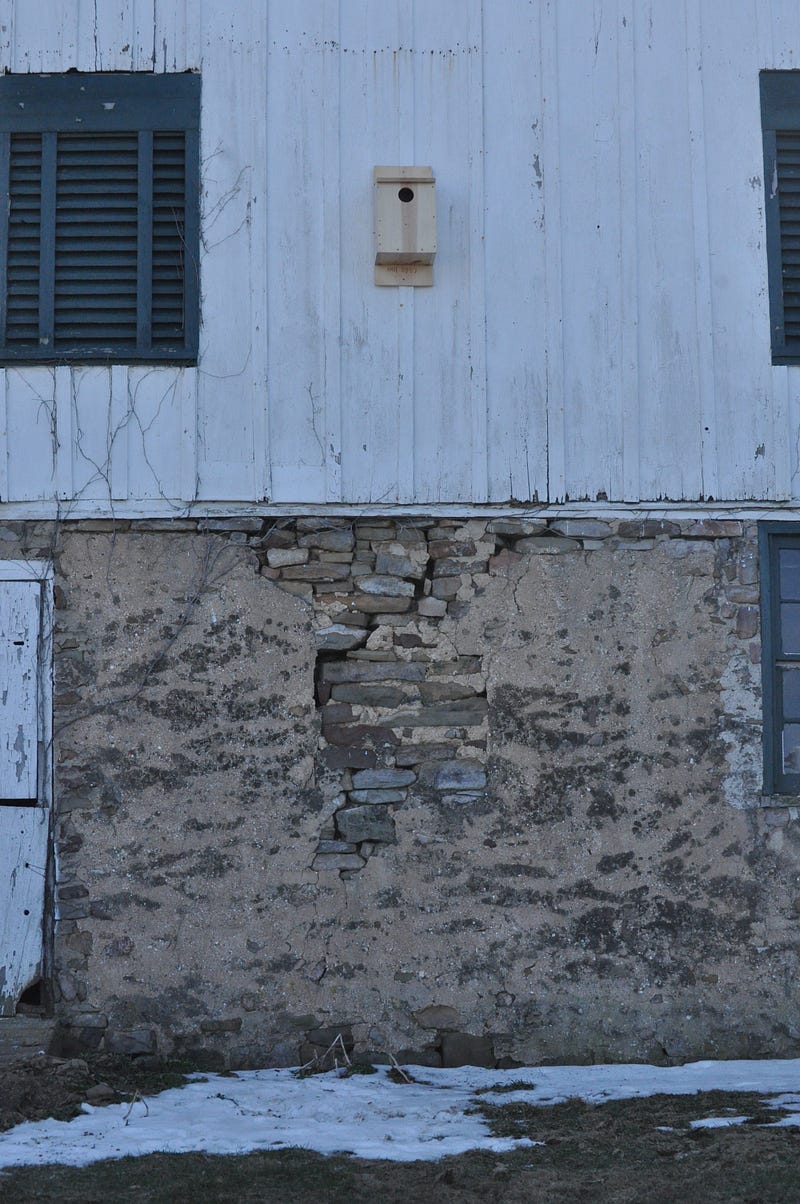
Nest box on the side of a barn.
Best wishes and good luck!
